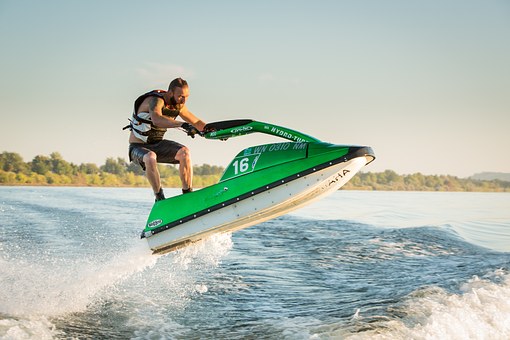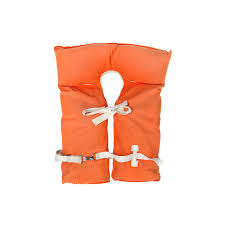A First-Time PWC (Jet Ski) Users Guide
Summer means not only enjoying the peace and quiet of the lakes and bays of Wisconsin but the wild rides on a PWC too! With your adrenaline going crazy, it’s no wonder it’s become such a popular summertime activity!
A jet ski can take you just about anywhere on the lake or bay. If you’re new to the sport, you probably have a few questions. This guide may help you understand what you can expect from a jet ski or PWC (personal watercraft)
What is a PWC or Jet Ski?
They’re everywhere, but what is this magical machine we call a “jet ski” or “pwc”? Jet skis, Wave Runners, and Sea-Doo are the trademarked brand names for what we refer to as a jet ski.
Are there different Styles?
Yes, they come in two styles: Stand-Ups and Sit-Downs.
Both styles use water to create thrust to provide propulsion. The propulsion also controls the steering. Therefore, the motor has to be running to use either or both features.
Stand-up jet skis require a great deal of balance as any experienced operator will tell you. I suggest that your first jet ski ride happens on a sit-down unit.
Stand-ups are not easy to control, and a strong wave can easily throw you off balance. That means you are going for a swim, whether you want to or not!
You have greater control on a sit-down from a slow idle to full speed ahead. The sit-down type is more comfortable to ride, and, if maneuvered correctly, you don’t even have to get wet! But who wants that! The wetter you are, the better.
Before your first trip on a PWC (here comes the checklist)
Jet ski riders do get injured; which makes it important to familiarize yourself with the specific watercraft you’ll be riding.
Injuries?? From what?! How about getting thrown off your ride for one. It’s very easy to do when you are turning at full speed. It’s exciting also.
Despite this, safety should be your first concern – both for you, your passenger, and people in the immediate area.
Know your machine’s controls and capabilities! Know your abilities as well. Different brands will have different controls, so make sure you know what’s the throttle and what’s the emergency shut off. Throwing the wrong switch could be very embarrassing (and dangerous).
Make sure you have enough fuel and all the proper safety equipment too.
My First Jet Ski Ride – what do I need to take with me?
The U.S. Coast Guard considers a PWC to be a Class A vessels. Therefore you must follow all rules and regulations for boats under 16 feet. Before that ride, make sure you have the required safety equipment. Not only to satisfy the Coast Guard but for your own safety as well.
Wear Coast Guard-approved life jackets/PFDs at all times. It’s a law that you and passengers can live with! Dress appropriately in a wetsuit, if possible. Wear simple feet protection and don’t forget eye protection. In most cases, your face will be pelted with stinging water while on your ride.
Check if your state requires a license while operating a PWC. If so, you may have to take a jet ski safety course to qualify for your license. The course may make you eligible for a PWC insurance discount too! Carry the proper documentation, such as vessel registration. It’s wise to have some form of identification also in case you are incapable of responding.
Secure a Coast Guard-approved fire extinguisher onboard if possible.
What else should I have?
Carry an audible signaling device, such as a whistle or horn. Don’t forget to check your fuel gauge. You will forget the time (a good thing for most of us) but bad if you run out of daylight or fuel! The driver of the jet ski must wear a lanyard around their wrist, which is attached to the key in the ignition. It’s known as a kill switch cord. The kill switch will turn off the engine in case the driver gets thrown off the unit. Some models may shut down if the throttle is released (as you go flying through the air).
Back at the dock, don’t forget to remove the cord! It stops any unauthorized use, whether preventing theft or safely securing the jet ski from daring young teenage riders.
What do I do if I fall off?
No doubt you will fall off, so here’s what you do.
Don’t panic. Re-boarding is a breeze if you follow these steps!
1. Turn the unit over from the side but watch the steering. It might hit you if you’re not careful.
2. Swim to the stern (back) to re-board. Re-boarding from the side may cause the unit to flip over, right on top of you.
3. There are handles or straps on the back of the seat. Use them to pull yourself up.
4. Move forward to the seat and don’t forget to re-attach the safety lanyard.
5. Of course, you were wearing a life preserver all this time.
Riding a Jet Ski with Passengers
It’s no surprise you will become very popular with your friends and family. They all want to ride on, or better yet, drive it themselves. If so, there are some extra steps to follow:
Carry only the permitted number of passengers that the jet ski allows. Don’t pile the kids on even for a slow speed ride. Make everyone wait their turn. Don’t forget there is a weight limit also. You must follow that limit.
All passengers must sit behind the driver.
Whenever the jet ski’s moving, have passengers secure themselves onto the seat straps provided. They will be the first to get thrown off the unit in a sharp turn at high speeds.
Make sure no one places their feet in the water while you are moving.
Demonstrate the basics of driving a jet-ski to all passenger’s. Why? If the driver becomes injured, it could come in handy! Make sure they know how to re-board if they are thrown off and you are injured.
Lookout for blindspots while turning.
Riding jet skis is a fun-filled summer pastime, but only if you do it correctly and safely. It takes practice. With practice, you’ll be ready when your time comes.
Be safe but have fun. Get out there and ride!
Next week we will talk about jet skis and THE LAW! https://wisconsinpws.com/jet-skis-the-law/
Do you have a friend that might be interested in this post? Please forward it to them.
Pier & Waterfront Solutions
PWS is located at 7325 St. Hwy 57. That’s 1 mile North of County MM (Hwy 42) and 3 miles South of Sturgeon Bay at the Idlewild Road intersection. Or – for more information, you can call Jerry @ 920-493-4404.







